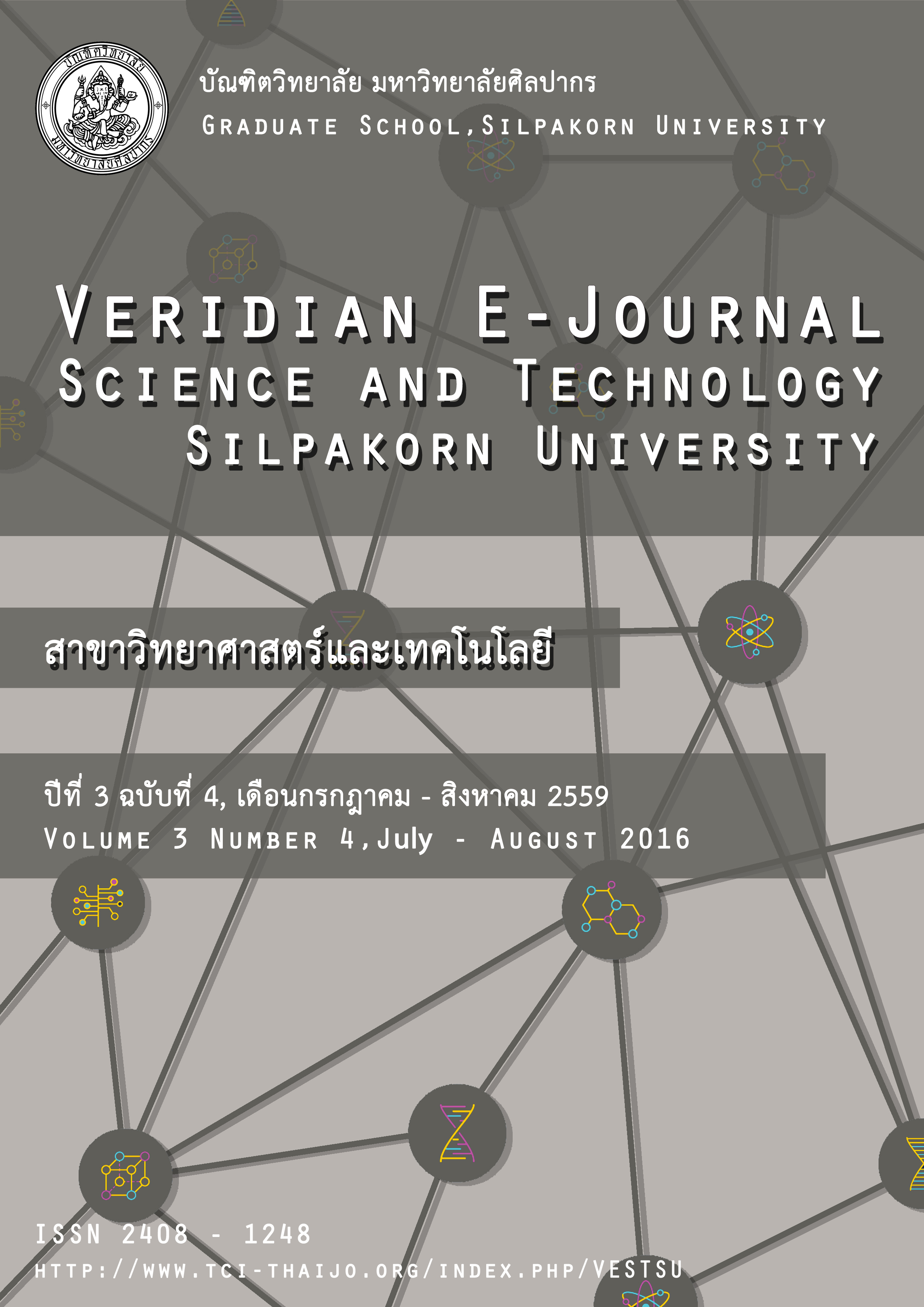การเปรียบเทียบผลการตรวจหารอยลายนิ้วมือแฝงบนกระดาษด้วยวิธีการใช้ 5 – methylthioninhydrin กับวิธีการใช้ ninhydrin และ 1,2 – indanedione
Main Article Content
บทคัดย่อ
งานวิจัยนี้เป็นการศึกษาเปรียบเทียบการใช้สารเคมีคือ ninhydrin 5 – methyl thioninhydrin และ 1,2 - indanedione ในการตรวจหารอยลายนิ้วมือแฝงบนกระดาษชนิดต่างๆ ซึ่งตัวอย่างที่ใช้ในการศึกษานี้คือ กระดาษถ่ายเอกสารขนาด A4 สีขาว กระดาษกล่องพัสดุไปรษณีย์สีน้ำตาล กระดาษซองใส่เอกสารสีน้ำตาล และกระดาษซองจดหมายสีขาว รอยลายนิ้วมือแฝงที่ได้จากการใช้สาร1,2 – indanedione และ5 – methylthioninhydrin ตามด้วยการทาทับสารละลาย zinc chloride ถูกนำมาตรวจดูโดยใช้แหล่งกำเนิดแสงที่ส่องผ่านฟิลเตอร์ที่ความยาวคลื่นระหว่าง 495 – 550 นาโนเมตร จากการศึกษาผลของอายุของลายนิ้วมือแฝงโดยประทับรอยลายนิ้วมือแฝงบนตัวอย่างกระดาษ จากนั้นหารอยลายนิ้วมือแฝงทันที และทิ้งไว้ที่เวลา 6 ชั่วโมง 12 ชั่วโมง 24 ชั่วโมง 1 สัปดาห์ และ 1 เดือน ก่อนนำมาตรวจหารอยลายนิ้วมือแฝง คุณภาพของรอยลายนิ้วมือแฝงที่ได้ ตรวจสอบจากจำนวนจุดลักษณะสำคัญพิเศษ (MINUTIA) ที่ตรวจโดยใช้ MINI AFIS ผลการทดลองพบว่าการใช้ ninhydrin เป็นสารเคมีที่ดีที่สุดในการตรวจหารอยลายนิ้วมือแฝงบนกระดาษตัวอย่างทุกชนิดที่ศึกษาในงานวิจัยนี้ นอกจากนี้ยังพบว่ากระดาษกล่องพัสดุไปรษณีย์ สีน้ำตาลเป็นพื้นผิวที่ตรวจได้ยากที่สุดในการตรวจหารอยลายนิ้วมือแฝง อย่างไรก็ตามรอยลายนิ้วมือแฝงที่ทดสอบบนกล่องพัสดุไปรษณีย์สีน้ำตาล สามารถตรวจพบจำนวนจุดลักษณะสำคัญพิเศษสูงเมื่อใช้สารละลาย ninhydrin
A comparison study has been carried out on the uses of ninhydrin, 5 – methyl thioninhydrin and 1,2 – indanedione as reagents for the detection of latent fingerprints on papers. The substrates used in this study were photocopy papers, brown card boards, brown paper envelopes and white paper envelopes. The fingerprints developed by using 1,2 – indanedione and 5 – methylthioninhydrin followed by applying zinc chloride solution were visualized with the light source filterred for the wavelength in the 495 – 550 nm range. The effect of aging time on the latent fingerprints was examined from the test items prepared 6 hours, 12 hours, 24 hours, 1 week and 1 month before developing. The qualityof the developed fingerprint was evaluated from the number of minutiae identified by a MINI AFIS. The results indicated that ninhydrin is the best reagent for the detection of latent fingerprints on all types of substrate studied. It was also found that the brown card board was the most difficult substrate in the visualization of the latent fingerprints. However, well defined fingerprints on the test samples of the brown card board can be observed with high numbers of minutiae when the items were developed with Ninhydrin

